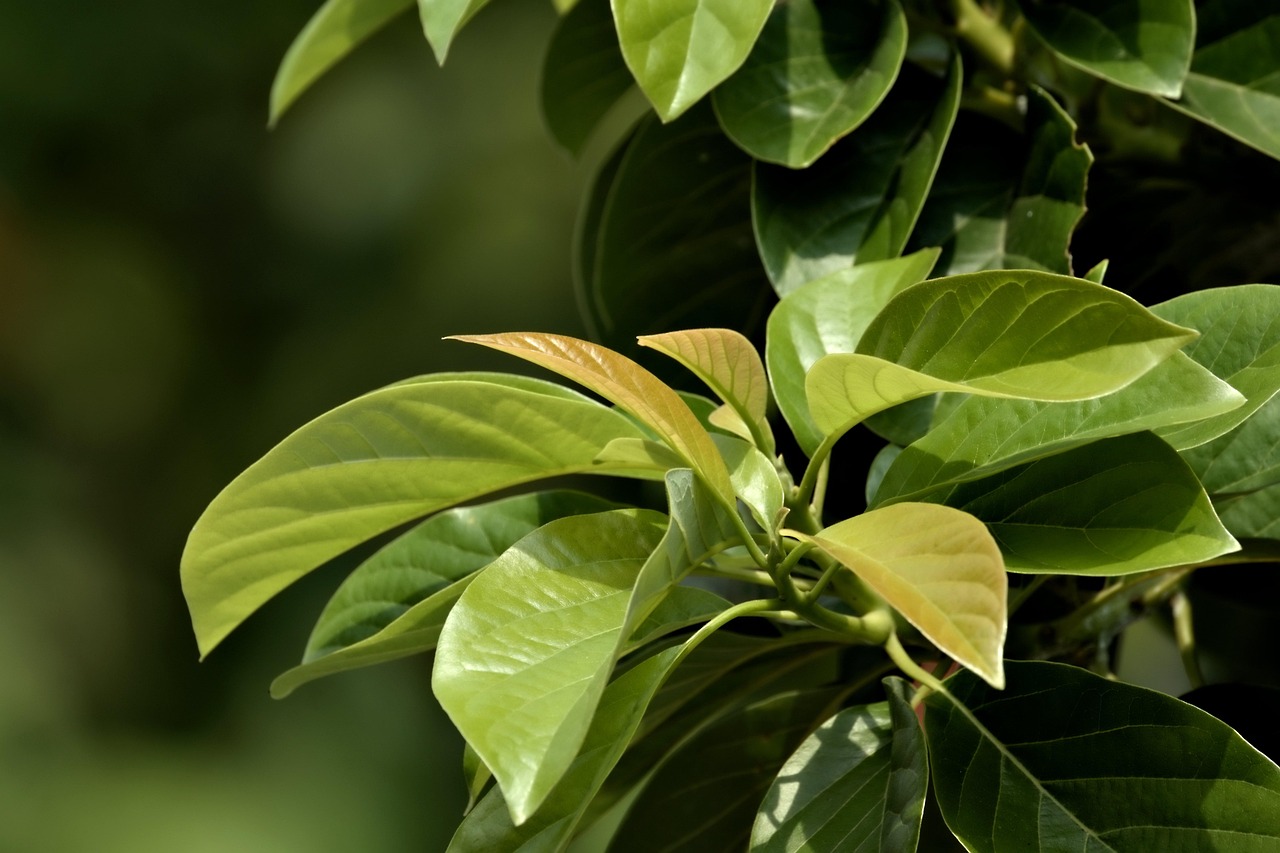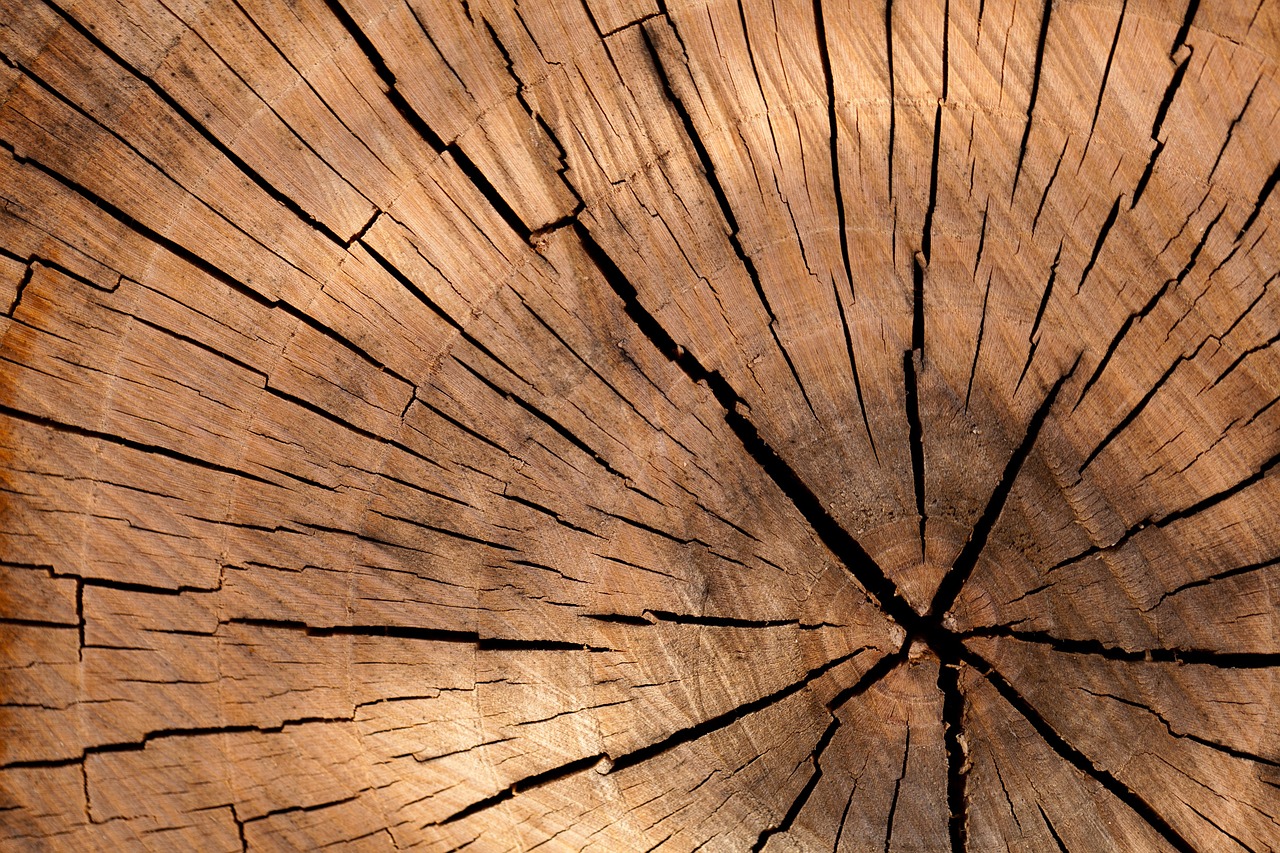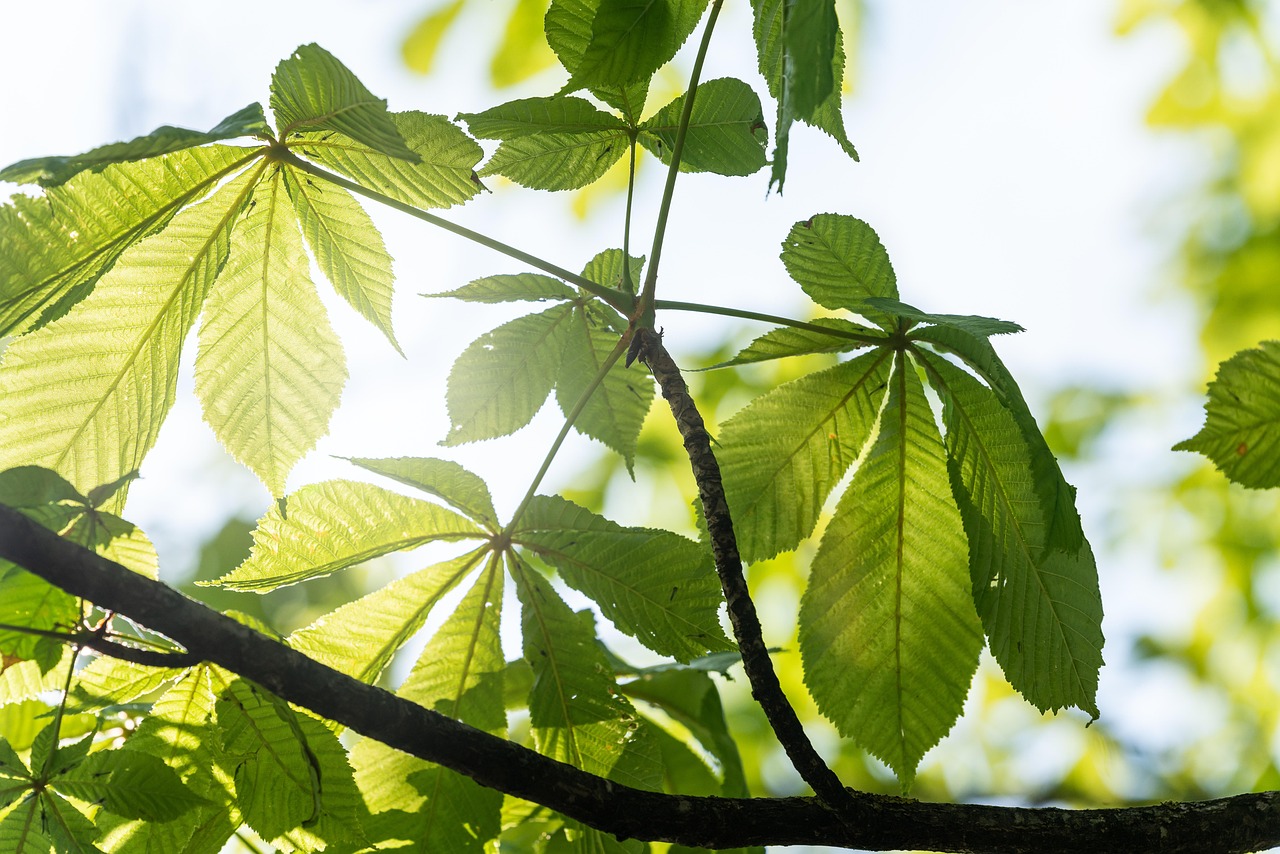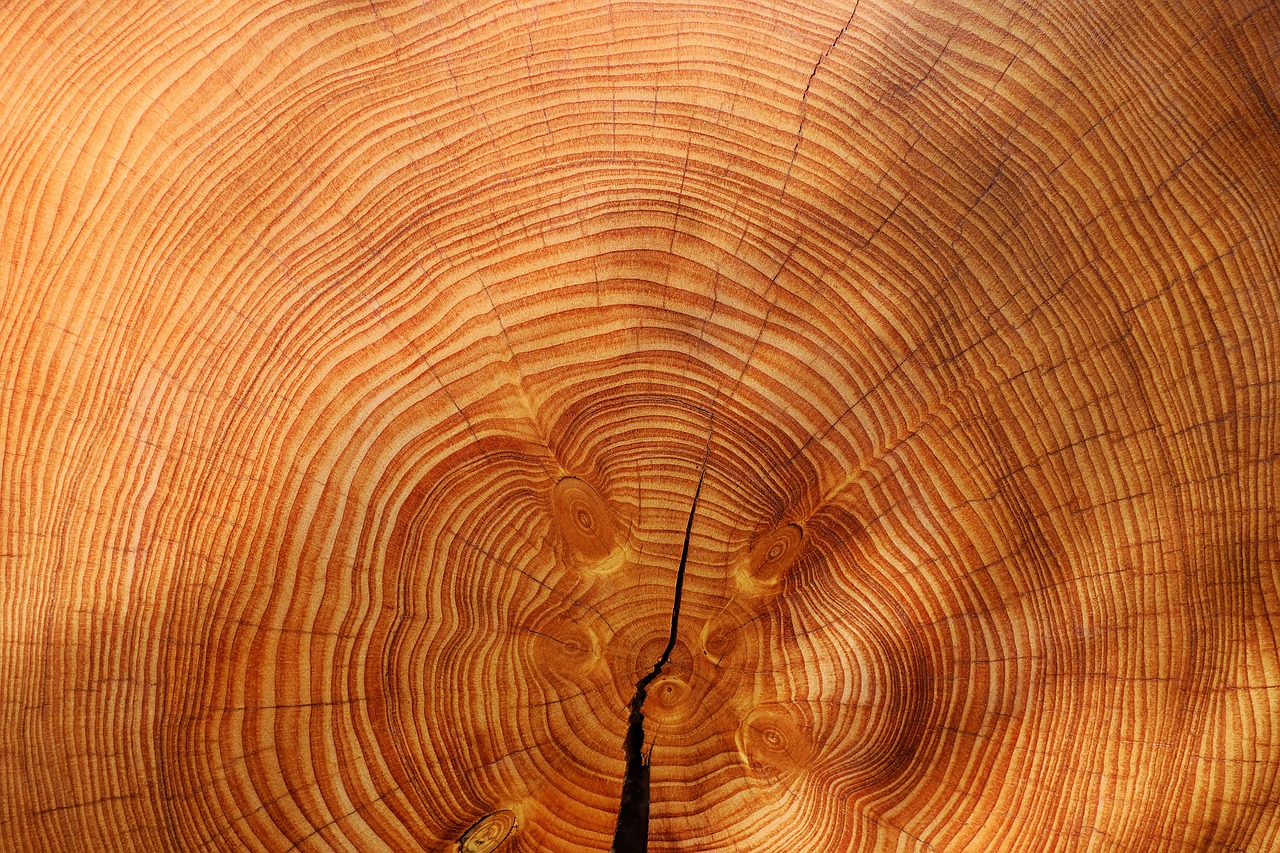Tree growth rates vary significantly among species, influencing landscape design decisions. Understanding these rates helps in selecting the right trees for specific environments, ensuring optimal growth, aesthetics, and maintenance over time.
Choosing the right trees for landscape design is crucial for creating sustainable and visually appealing outdoor spaces. One of the key factors to consider in this decision-making process is the growth rate of different tree species. Growth rates can vary widely, depending on species, environmental conditions, and care provided. By understanding these differences, landscape designers can make informed choices that align with the goals of their projects.

In general, trees can be categorized into three groups based on their growth rates: slow, moderate, and fast-growing species. Slow-growing trees may take decades to reach maturity, while fast-growing trees can achieve significant height and foliage in just a few years. The choice between these types can affect not only the immediate aesthetic but also long-term maintenance and ecological impact.
Factors Influencing Tree Growth Rates
Several factors play a role in determining how quickly a tree grows. Understanding these factors is essential for making informed decisions about tree selection for a landscape project.
- Species: Different tree species have inherent growth characteristics. Some are genetically predisposed to grow faster than others.
- Soil Quality: Well-drained, nutrient-rich soils support faster growth. Poor soil conditions can hinder development.
- Water Availability: Adequate water supply is crucial for growth. Drought conditions can slow down or even stop growth.
- Sunlight Exposure: Trees require sufficient sunlight for photosynthesis. Shade can limit growth rates.
- Climate: Temperature and weather patterns influence growth, with some species thriving in specific climates.
- Pests and Diseases: Infestations or infections can significantly impact growth rates by stressing the tree.
To further illustrate the differences in growth rates among various tree species, the following table provides a comparison of selected species commonly used in landscape design:

| Tree Species | Growth Rate (Feet per Year) | Mature Height (Feet) | Common Uses |
|---|---|---|---|
| Red Maple | 1-3 | 40-60 | Shade, ornamental |
| White Oak | 1-2 | 50-80 | Shade, timber |
| Lombardy Poplar | 3-5 | 40-60 | Windbreaks, privacy screens |
| Eastern Redbud | 1-2 | 20-30 | Ornamental, spring color |
| Ponderosa Pine | 1-2 | 60-100 | Shelterbelts, timber |
| Sugar Maple | 1-2 | 40-80 | Shade, syrup production |
This table highlights the growth rates and mature heights of some popular tree species. By evaluating these factors, landscape designers can create more effective designs that incorporate trees suited to their specific environments and aesthetic goals. Selecting the right species not only enhances the beauty of a landscape but also contributes to its sustainability and ecological health.
The importance of tree growth rates extends beyond aesthetics. Fast-growing trees may provide immediate shade and shelter but can also require more maintenance as they mature. Conversely, slow-growing trees may take longer to establish but often have longer lifespans and might be more resilient in certain conditions. Therefore, understanding these dynamics is crucial for making informed landscape design decisions.
This knowledge equips designers with the tools needed to balance immediate visual impact with long-term ecological considerations. Being aware of how different tree species will perform over time allows for more strategic planning and resource allocation in landscape projects.

Comparing Fast-Growing and Slow-Growing Trees
The decision to include fast-growing or slow-growing trees in a landscape design often hinges on the specific goals of the project. Fast-growing trees can quickly enhance the visual appeal of an area, while slow-growing trees may contribute to a more stable ecosystem over time. Each option has its benefits and drawbacks, which should be carefully considered.
Benefits of Fast-Growing Trees
Fast-growing trees are popular in landscape design for several reasons:
- Quick Aesthetic Improvement: Fast-growing trees can provide immediate shade and visual interest, making them ideal for new developments.
- Rapid Erosion Control: Their quick establishment helps stabilize soil and control erosion, particularly in new construction sites.
- Enhanced Property Value: Properties with established trees often see an increase in market value due to the immediate curb appeal.
- Wildlife Habitat: Fast-growing trees can provide habitat and food sources for birds and other wildlife quickly.
However, it is essential to recognize some potential downsides:

- Increased Maintenance: Fast-growing trees may require more frequent pruning and care to manage their rapid growth.
- Shorter Lifespan: Many fast-growing species may have a shorter lifespan compared to their slower-growing counterparts.
- Potential for Weak Wood: Some fast-growing trees may develop weak branches that are susceptible to breakage during storms.
Advantages of Slow-Growing Trees
On the other hand, slow-growing trees offer their own set of advantages:
- Longevity: Many slow-growing species can live for decades, providing long-term benefits to the landscape.
- Strength and Stability: These trees typically develop denser wood, making them more resilient against wind and storm damage.
- Lower Maintenance: Slow-growing trees often require less frequent pruning and care, making them easier to manage in the long run.
- Ecological Benefits: They can support a stable ecosystem, fostering biodiversity over time.
Despite their many advantages, slow-growing trees may come with challenges:
- Delayed Impact: It takes longer for these trees to provide shade or aesthetic benefits, which may not meet immediate design goals.
- Higher Initial Cost: Some slow-growing species may be more expensive to purchase or establish due to their rarity.
Selecting the Right Trees for Your Landscape
When selecting trees for a landscape project, it is essential to evaluate various factors beyond just growth rates. Understanding the specific conditions of the site will help determine the best choices.
Site Conditions
The following site conditions should be assessed when choosing trees:
- Soil Type: Test the soil for pH, drainage, and nutrient content. Different species thrive in different soil types.
- Sunlight Exposure: Identify how much sunlight the area receives throughout the day. Some trees require full sun while others flourish in partial shade.
- Climate Zones: Understanding the local climate will help narrow down species that are well-adapted to the environment.
- Space Availability: Consider the mature size of the tree to ensure there is enough space for growth without crowding other plants or structures.
Aesthetic Considerations
Aesthetics play a vital role in tree selection. Factors to consider include:
- Color and Texture: Choose trees that complement the existing landscape colors and textures.
- Seasonal Interest: Select species that offer visual appeal throughout the seasons, such as flowering in spring or colorful foliage in fall.
- Form and Structure: Assess how the tree’s shape will fit into the overall design. Some trees provide a more formal appearance, while others add a naturalistic feel.
By carefully analyzing both tree growth rates and site-specific conditions, landscape designers can create spaces that are not only beautiful but also functional and sustainable over time. The right tree selection will enhance the overall landscape, providing benefits for years to come.
Impact of Tree Growth Rates on Ecosystems
The growth rates of trees have significant implications for local ecosystems. Understanding these impacts can help landscape designers make choices that promote biodiversity and environmental health. Trees play various roles in ecosystems, including carbon sequestration, habitat provision, and soil stabilization.
The following table highlights how different growth rates affect ecosystem functions:
<tdSlow-Growing| Growth Rate | Ecosystem Benefits | Potential Drawbacks |
|---|---|---|
| Fast-Growing | Quickly sequester carbon; provide rapid habitat creation. | Poor long-term stability; may outcompete slower native species. |
| Long-term carbon storage; support diverse understory flora. | Takes longer to establish; may require more initial planning. |
This understanding of tree growth rates and their broader ecological implications can guide more responsible landscape design, ultimately benefiting both human users and the natural environment.
Tree Selection for Different Landscape Types
When designing landscapes, the type of environment significantly influences tree selection. Different landscape types, such as urban, suburban, rural, and natural areas, present unique challenges and opportunities for tree planting. Understanding these nuances can help landscape designers make more effective decisions regarding tree growth rates and species selection.
Urban Landscapes
Urban areas often have limited space and specific environmental conditions that impact tree growth. The following points highlight considerations for selecting trees in urban settings:
- Space Constraints: Trees must fit within limited areas. Consider species with compact growth habits such as Amur Maple or Japanese Tree Lilac.
- Pavement and Infrastructure: Roots should not damage sidewalks or foundations. Shallow-rooted trees like Serviceberry are often preferred.
- Air Quality: Trees can improve air quality by filtering pollutants. Species like Sweetgum and Red Maple are effective in urban environments.
- Stormwater Management: Trees can help manage runoff. Selecting species that tolerate wet conditions, like Bald Cypress, is beneficial.
Suburban Landscapes
Suburban areas typically offer more space and varied environmental conditions. Here are key factors for tree selection in these regions:
- Diverse Aesthetic Needs: Homeowners may seek a variety of shapes and sizes. Species like Flowering Dogwood and Eastern Redbud can provide seasonal color.
- Shade Requirements: Fast-growing trees such as Linden or Silver Maple can provide quick shade for homes and yards.
- Wildlife Habitat: Suburban landscapes can support various wildlife. Selecting native species like Black Cherry can enhance local biodiversity.
- Maintenance Considerations: Homeowners often prefer low-maintenance trees. Species such as Sugar Maple may require less care over time.
Rural Landscapes
Rural areas often provide ample space for larger trees. Factors influencing tree selection include:
- Aesthetic Value: Larger trees can create dramatic landscapes. Consider species like Pine, Oak, or Redwood.
- Erosion Control: Trees can help prevent soil erosion on slopes. Fast-growing species such as Bamboo may be effective in these situations.
- Agricultural Integration: Trees can be integrated into agricultural spaces as windbreaks or shade. Species like Cottonwood are often utilized.
- Biodiversity Enhancement: Planting a mix of species can support a wider range of wildlife and plant life.
Natural Areas and Conservation Efforts
In natural areas, tree selection focuses on restoring ecosystems and enhancing biodiversity. Important aspects include:
- Natives Over Exotics: Prioritize native species to support local ecosystems. Native trees are adapted to local conditions and provide food and habitat for native wildlife.
- Ecosystem Services: Emphasize trees that provide essential ecosystem services, such as carbon sequestration, erosion control, and water filtration.
- Diversity of Plant Life: Aim to plant a variety of species to create resilient ecosystems that can withstand pests, diseases, and climate challenges.
- Sustainable Practices: Incorporate sustainable planting practices to ensure the long-term health of the landscape, such as using mulch and maintaining soil health.
The Role of Growth Rates in Landscape Planning
The growth rate of trees is a critical factor in landscape planning. It affects not only the immediate aesthetic but also the long-term viability of the landscape design. Understanding how to incorporate growth rates into planning can lead to more successful outcomes.
Immediate vs. Long-Term Goals
The choice between fast-growing and slow-growing trees often depends on the immediate versus long-term goals of the landscape design:
- Immediate Impact: Fast-growing trees can quickly enhance visual appeal and provide shade, which is crucial in newly developed areas.
- Sustainability Goals: Slow-growing trees contribute to long-term ecological stability and often require less maintenance once established.
- Aesthetic Balance: A mix of both fast and slow-growing trees can create a visually appealing landscape while ensuring longevity and sustainability.
Planning for Maintenance
A critical aspect of incorporating tree growth rates into landscape planning is maintenance. Key points to consider include:
- Pruning Needs: Fast-growing trees may require more frequent pruning to manage their growth and maintain shape.
- Pest Management: Certain fast-growing species may attract pests more readily, necessitating ongoing pest management strategies.
- Irrigation Requirements: Newly planted fast-growing trees often need more water until established. Planning irrigation can help meet these needs effectively.
- Cultural Practices: Understanding the cultural requirements of selected species is vital for successful long-term growth and health.
This approach to integrating tree growth rates into landscape planning can lead to well-balanced designs that meet both immediate aesthetic needs and long-term sustainability goals. By carefully considering the growth characteristics of trees along with site-specific conditions, designers can create landscapes that thrive for years to come.
When considering tree growth rates for landscape design, it is essential to evaluate the long-term impacts on the surrounding environment. Fast-growing trees may initially seem like the best option for quick results, but their environmental implications should not be overlooked. This includes their effects on soil health, water usage, and interactions with local wildlife. Understanding these dynamics can help in making more informed decisions that benefit both the landscape and the ecosystem.
Environmental Considerations
The choice of tree species based on growth rates plays a significant role in environmental sustainability. Here are some key environmental factors to consider:
- Soil Health: Fast-growing trees may deplete soil nutrients more rapidly than slower-growing species. Planting a mix of both can help maintain soil health over time.
- Water Usage: Different tree species have varying water needs. Fast-growing trees often require more water during their establishment phase, but once mature, some may be less efficient in water usage compared to native slow-growing species.
- Wildlife Support: Native, slow-growing trees tend to support a greater diversity of wildlife, providing habitats and food sources that are essential for local ecosystems.
- Carbon Sequestration: While fast-growing trees can sequester carbon quickly, the longevity of slow-growing trees can lead to more significant long-term carbon storage, making them valuable in the fight against climate change.
Tree Growth Rate and Climate Adaptability
The adaptability of tree species to changing climate conditions is another critical consideration. As climate patterns shift, some tree species may struggle to thrive. Evaluating growth rates in conjunction with climate adaptability can enhance landscape resilience:
- Temperature Tolerance: Select trees that can withstand local temperature extremes. Native species often have better adaptation to local climate variations.
- Drought Resistance: Fast-growing trees may be less drought-resistant than some slow-growing varieties. Understanding this can guide selection for areas prone to water scarcity.
- Pest and Disease Resistance: Trees with slower growth often develop resilience against pests and diseases. Choosing species that are naturally resistant can reduce maintenance efforts in the long run.
Community Engagement and Landscape Design
Involving the community in landscape design can foster a sense of ownership and pride in green spaces. Engaging local residents in the decision-making process regarding tree selection allows for a more tailored approach that reflects community values and preferences:
- Educational Workshops: Hosting workshops allows communities to learn about the benefits of different tree species and their growth rates.
- Volunteer Planting Days: Organizing events where community members can participate in planting trees promotes stewardship and raises awareness of environmental issues.
- Cultural Relevance: Selecting trees that hold cultural significance for a community enhances the connection between people and their environment.
Final Thoughts
In conclusion, understanding tree growth rates is vital for effective landscape design. The choice between fast-growing and slow-growing trees impacts not only the immediate aesthetics but also the long-term sustainability of the landscape. Designers must consider various factors including site conditions, maintenance needs, environmental impacts, and community engagement when selecting tree species.
By carefully balancing immediate visual appeal with long-term ecological considerations, landscape designers can create vibrant, sustainable environments. The integration of diverse tree species that fulfill both aesthetic and ecological roles will ensure landscapes thrive for generations to come. Ultimately, making informed decisions based on tree growth rates and their implications will lead to healthier ecosystems and enhanced quality of life for all who inhabit these spaces.
The journey toward a greener future begins with thoughtful planning today. By prioritizing the selection of appropriate tree species based on growth rates and site-specific conditions, we can cultivate landscapes that are not only beautiful but also resilient and beneficial to our environment.
